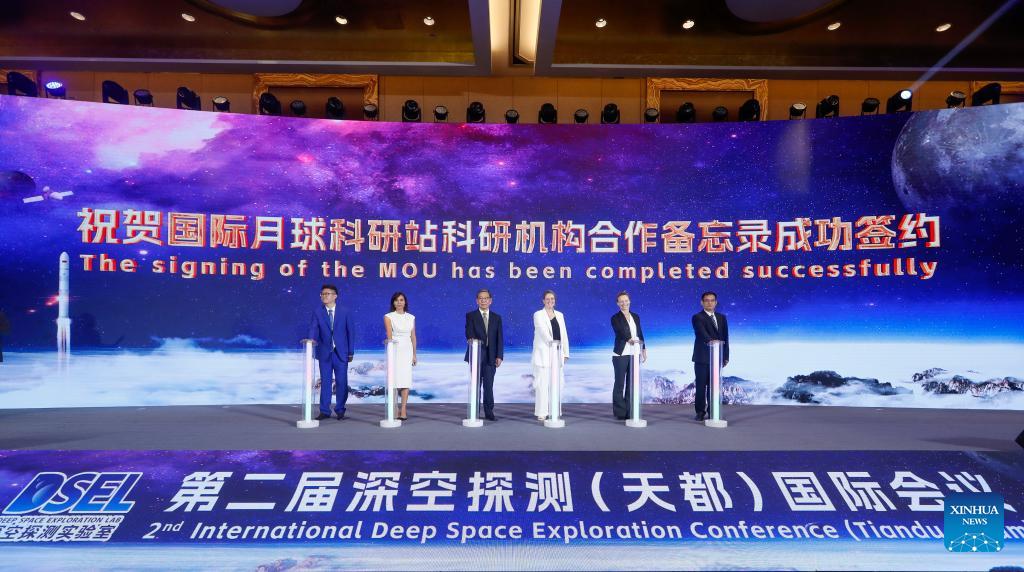
 0 Comment(s)
0 Comment(s) Print
Print E-mail Xinhua, September 5, 2024
E-mail Xinhua, September 5, 2024
China's Deep Space Exploration Lab inks memoranda of understanding (MOU) with international organizations during the 2nd International Deep Space Exploration Conference in Tunxi, east China's Anhui province, on Sept. 5, 2024. [Photo/Xinhua]
China's ambitious initiative to launch an international lunar research station has gained new global cooperation partners.
During the opening ceremony of a two-day space conference held in Tunxi, east China's Anhui Province on Thursday, the China National Space Administration (CNSA) and its counterpart in Senegal signed an agreement on International Lunar Research Station (ILRS) cooperation.
At the conference, China's Deep Space Exploration Lab (DSEL) inked memoranda of understanding with 10 institutions from countries including Serbia, Switzerland, the United Arab Emirates, Indonesia, Pakistan, Panama and South Africa.
Also among the institutions are the Belt and Road Alliance for Science & Technology, the Foundation for Space Development Africa, and Africa Business Alliance.
In 2017, the CNSA officially launched the ILRS cooperation initiative to the international community. To date, over 40 institutions from across the world have signed cooperative documents with China.
Wu Weiren, director and chief scientist of the DSEL, said in his opening remarks at the conference that the ILRS adheres to the principles of mutual consultation, joint construction and shared benefits to foster collaborative efforts with global partners.
The ILRS is a scientific experimental facility consisting of sections on the lunar surface, in lunar orbit and on Earth. It is designed to be an expandable and maintainable system capable of long-term robotic operation with short-term human participation on the moon.
The project will be implemented in two phases. The first phase will see a basic model built by 2035 in the lunar south pole region.
Wu Yanhua, chief designer of the country's major deep space exploration project, said at the conference that this lunar facility would offer a comprehensive suite of functionalities including power provision, central command, communication navigation, Earth-Moon transportation, lunar exploration and ground support.
The basic model will be capable of conducting scientific research operations within a range of hundreds of kilometers around the lunar south pole, according to Wu Yanhua.
He extended an invitation to nations worldwide to participate in the program across different tiers, such as concept study-level, equipment-level, system-level and even mission-level.
Wu Yanhua also announced that China is planning to establish multiple organizations, including an international cooperation committee and a coordinating headquarters, to enhance global collaboration efforts.